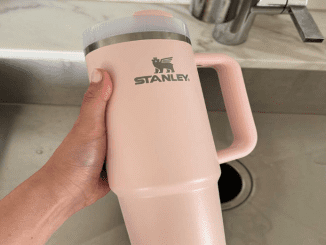The coal scuttle, a simple yet iconic household item, has a history steeped in tradition and practicality. Often seen as a vintage artifact today, this sturdy container was once an essential accessory in homes reliant on coal-fired stoves and heaters. Also known as a hod, coal bucket, or coal pail, the coal scuttle served a significant role in managing fuel for warmth and cooking. Let’s explore the origins, design, uses, and cultural significance of the coal scuttle, as well as its place in modern decor.

What is a Coal Scuttle? A Functional and Versatile Container
A coal scuttle is a bucket-like container designed to hold a convenient supply of coal, making it easy to keep fuel on hand for a coal-fired stove or heater. Typically crafted from metal, coal scuttles are durable and shaped in a way that allows for easy pouring. Their cylindrical or conical shape often features a slanted open top, facilitating the controlled addition of coal to a fire.
Most coal scuttles have one or two sturdy handles, with a larger top handle for carrying and a smaller side handle for better control when pouring. While they’re no longer a household staple in homes that rely on modern heating, coal scuttles remain popular as decorative pieces, evoking the charm of a bygone era.
The Origins of the Coal Scuttle: From Ancient Times to Today
The word scuttle traces its roots back to Latin, where scutulla referred to a serving platter. The term evolved through Old and Middle English to represent this practical coal-holding container. Interestingly, an alternate name, hod, comes from the Old French word hotte, meaning a basket carried on the back. This term also applies to boxes used in construction for carrying materials like bricks or mortar.
The coal scuttle’s design is straightforward yet highly functional. Its shape and materials have evolved with the times, but its primary purpose remains the same—to hold and transport fuel. When coal was a primary heating source, the coal scuttle was as essential in homes as any modern fuel tank or electric heater.
The Coal Scuttle’s Iconic Shape and Practical Design
The coal scuttle’s distinct, slanted open top and metal construction reflect its functional design. The tilt at the top enables users to pour coal efficiently, minimizing spillage and making it easy to aim the coal onto a fire. The side handle allows for greater control when tipping the bucket, a practical feature for avoiding coal dust and ensuring precision.
Over time, coal scuttles have been made from a variety of materials, including tin, brass, and copper. Brass and copper coal scuttles became especially popular as decorative pieces due to their aesthetic appeal and resistance to corrosion. These materials gave the coal scuttle a dual purpose—functionality for daily use and an ornamental quality that added to the warmth and style of a home.
The Infamous Coal Scuttle Helmet and Its Cultural Impact
Interestingly, the coal scuttle has a connection to history beyond household use. The German Stahlhelm, or steel helmet, was often referred to as the “Coal Scuttle Helmet” due to its shape. Adopted by the German army in World War I, this helmet had a distinctive flared brim and sloping sides, which resembled the classic coal scuttle design. This association led to the term “Coal Scuttle Helmet” being used in English-speaking countries, a name that has persisted in historical accounts and discussions of military gear.

The coal scuttle’s role in darker tales is not limited to military associations. Swedish serial killer Hilda Nilsson used a coal scuttle, along with a washboard and bucket, to drown children she was hired to care for in 1917. These disturbing uses underscore the coal scuttle’s historical presence and its capacity for more than just functional household tasks.
Coal Scuttles in Modern Home Decor: A Vintage Revival
Today, coal scuttles have found new life as decorative items, particularly in homes with rustic or vintage themes. Although the need for coal in everyday heating has diminished, the charm of a coal scuttle endures. It serves as a reminder of simpler, self-sufficient times, adding an element of nostalgia to modern homes.
People now repurpose coal scuttles for various uses, from holding kindling or firewood next to a fireplace to serving as stylish planters for indoor plants. They’re also a popular choice for storing umbrellas, adding a unique touch to entryways. Antique stores and vintage markets frequently feature coal scuttles, often with intricate designs or brass and copper finishes that make them stand out as statement pieces.
Choosing and Caring for a Coal Scuttle
If you’re considering adding a coal scuttle to your home decor, there are a few things to keep in mind:
- Material Selection: Look for coal scuttles made from durable metals like brass or copper, which resist rust and add an elegant touch to interiors. While iron and tin versions are also available, they may require more maintenance to prevent corrosion.
- Condition: Antique coal scuttles can develop a lovely patina over time, but check for any significant damage, such as rust holes or weak handles, if you plan to use it for storage.
- Purpose: Decide on how you’ll use the coal scuttle. If you intend to use it as a planter, consider adding a liner to prevent water from affecting the metal. For kindling storage, ensure the coal scuttle is dry and clean inside.
- Care and Maintenance: Brass and copper scuttles can be polished to maintain their shine, while tin or iron scuttles may benefit from a coat of clear varnish to prevent rust. Regularly wiping down the coal scuttle with a soft cloth can keep it dust-free and enhance its longevity.

The Coal Scuttle’s Lasting Appeal
The coal scuttle remains an enduring piece of history, capturing the charm of a time when coal stoves were central to home life. It’s a reminder of the practicality that defined much of the household design of the past, with a simple yet effective structure that served homes for generations. Whether appreciated for its historical significance or repurposed as a unique decor item, the coal scuttle exemplifies how vintage tools can find new roles in our lives.
For those who appreciate vintage aesthetics, adding a coal scuttle to their home can bring warmth and a touch of history into any room. With its rugged functionality and timeless style, the coal scuttle continues to be valued as much for its visual appeal as for the stories it carries from the past.


